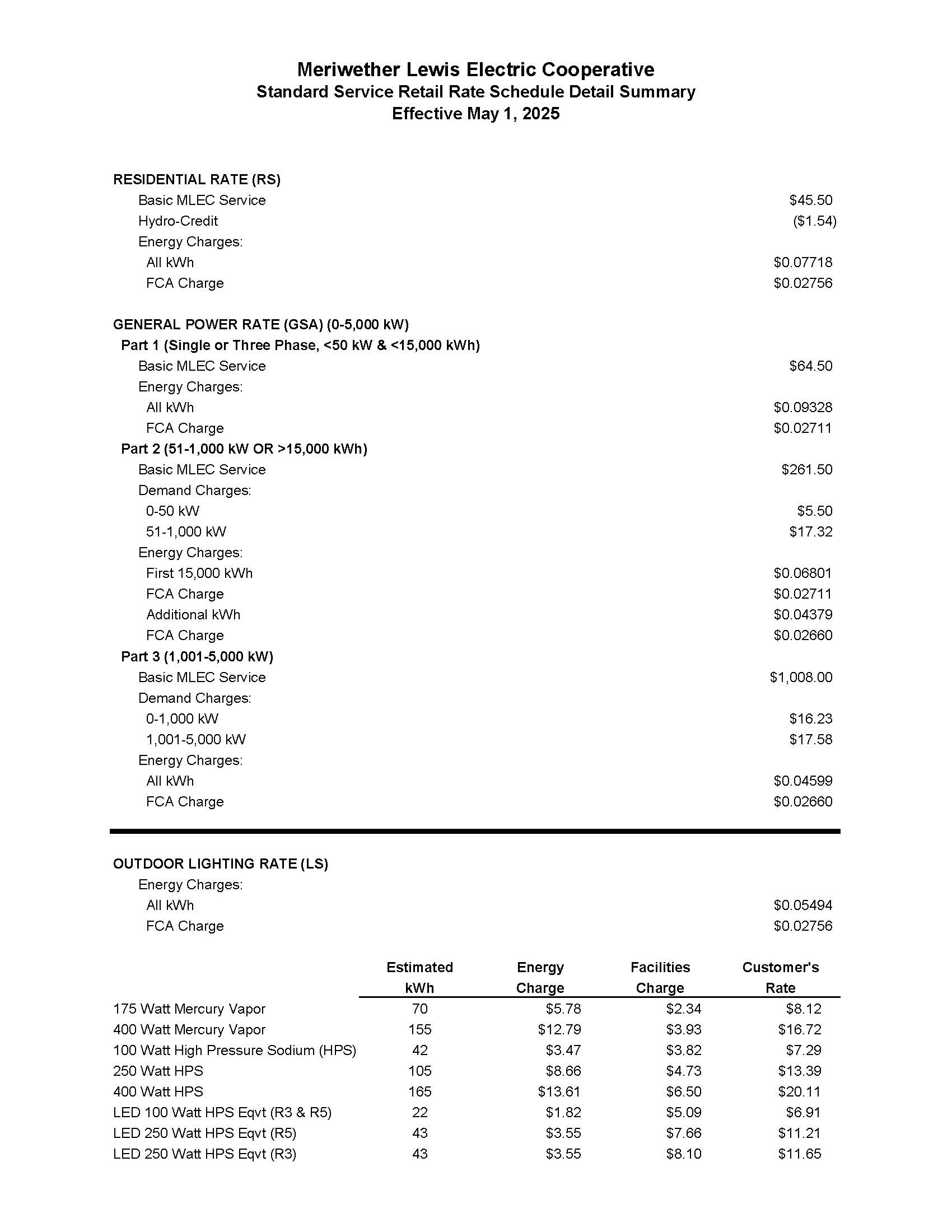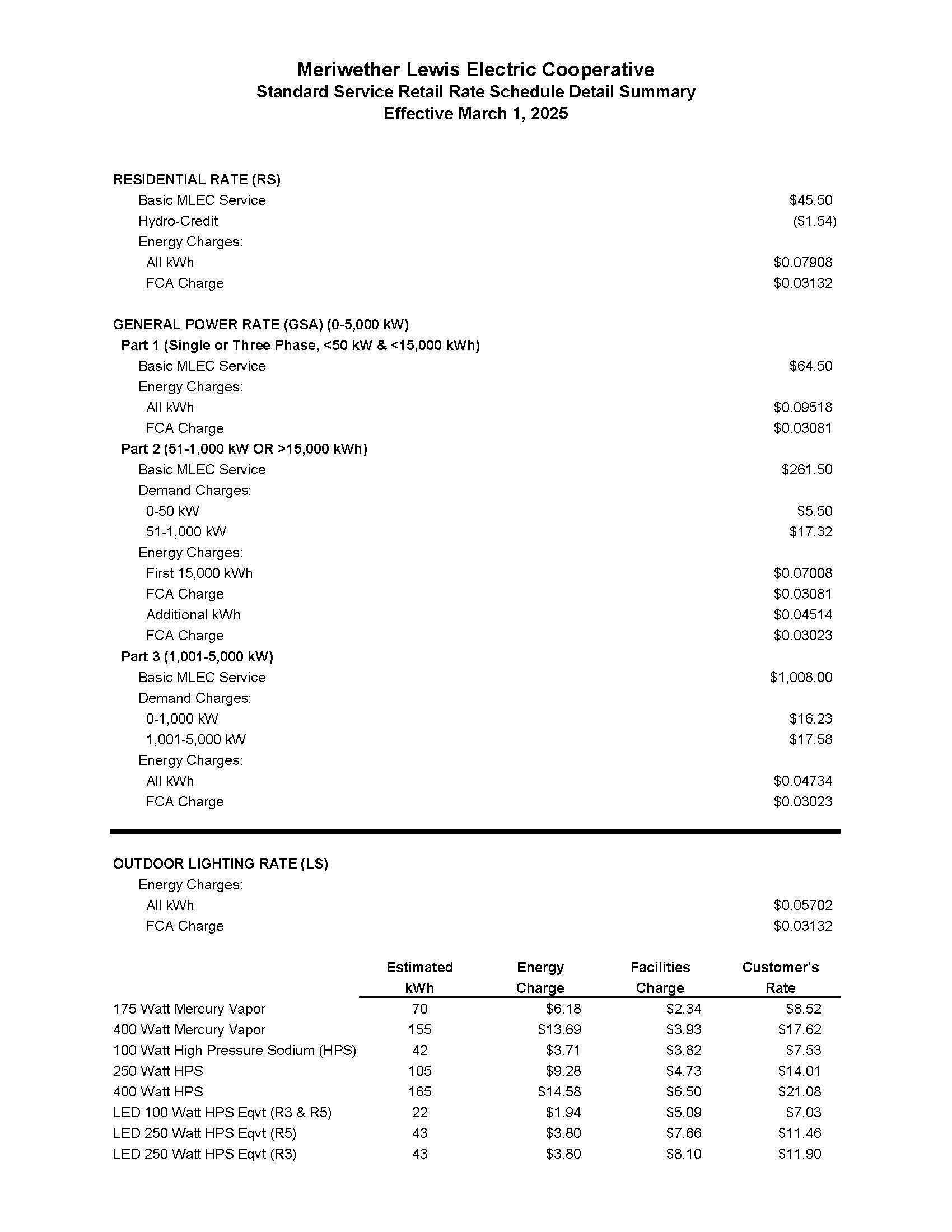RATES
To learn more about seasonal rates check out the Seasonal Rate Review. Looking for ways to save on energy? Check out Ways to Save!
Rates are subject to a Fuel Cost Adjustment (FCA) from the Tennessee Valley Authority. This mechanism allows TVA to adjust rates up or down as fuel and purchased-power costs rise and fall. It affects the energy (per kilowatt-hour) charges for all customers. MLEC retains NONE of the revenue from the FCA; the entire amount goes to TVA.
Need Electric Service? See our "Getting Electric Service" page for specifications, fees, etc.
Seasonal Energy Pricing
Members pay a higher price in the summer (June-September) and winter (December-March) for electricity. During transitional months (April-May and October-November) prices are lower. The change is tied to TVA’s cost difference for supplying power in the different seasons.
During a nice spring day, TVA can get by with using its hydroelectric dams, coal units and nuclear units to meet the demand for electricity. These are the cheapest ways for TVA to generate power. On a hot day, TVA must use more expensive ways to meet demand such as purchasing additional power from other generators to meet consumption demand.
No. It just means it costs us more to buy power from TVA; therefore, we pass the cost difference through to our members. (MLEC’s portion of a residential member’s bill essentially remains in the Basic MLEC Service line item.)
Fuel Cost Adjustment (FCA)
The Fuel Cost Adjustment (FCA) is the mechanism TVA uses to help recover fluctuating fuel and purchased power costs. The FCA ensures TVA recovers costs as they occur, helping TVA better match its revenues to expenses. Most utilities use similar mechanisms to adjust their rates. It is subject to change monthly.
About half of TVA’s power supply comes from fossil fuels used to make electricity – coal, oil and natural gas. When the prices of these fuels increase, TVA’s costs increase.
The FCA is calculated monthly as generation fuel costs and the cost of power TVA purchases from other suppliers rise and fall. The FCA calculation works by capturing the difference between the amount that TVA forecasts to pay for fuel during a given month and the amount that is collected through rates. This formula has two main components: the first is a forecast of anticipated fuel and purchased power costs; the second is a reconciliation of any fuel costs TVA under or over collected. The FCA is used to determine energy charges that are shown on customer’s bills.











